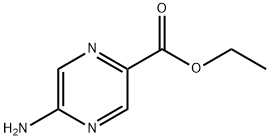Norovirus is notorious for its high contagiousness, spreading rapidly through contaminated food, water, and person - to - person contact. It can cause severe gastrointestinal distress, with symptoms like vomiting, diarrhea, and stomach cramps. Given its widespread impact on public health, especially in crowded places such as schools and cruise ships, the absence of a vaccine is puzzling. Scientists have been working hard, but what exactly are the obstacles? Is it due to the virus's constantly mutating nature, making it difficult to target? Or are there challenges in developing an effective delivery method for the vaccine?
Norovirus: So Contagious, but Why No Vaccine Yet?
Related Products More >
-
- equest For Quotation
- 25kg/bag



 沪ICP备2021018848号-5
沪ICP备2021018848号-5

Another big challenge is how the norovirus infects us. It causes mucosal infections, which means it infects the tissues on the surface of the gut. Compared to systemic infections like measles and chickenpox, these local viruses are much harder for our body to remember and fight against. You see, mucosal immunity is short - lived, not like systemic immunity. When we get a vaccine injection, it usually triggers a systemic immune response, not a mucosal one. So there's this disconnect. That's why an injected vaccine against mucosal infections like norovirus is more likely to just protect us from getting really sick, but not prevent the disease completely.
And then, there's the problem in the laboratory. When developing a vaccine, we usually need an animal model for initial experiments. But for norovirus, researchers don't have a good one. Human norovirus doesn't easily infect animals, and the norovirus that affects animals causes very different symptoms. So it's really tough to do proper research and testing.
In terms of the delivery method for the vaccine, scientists are trying different ways. One way is to make virus - like particles. They produce a lot of the main surface proteins of the norovirus, which then form empty shells that look like the virus. When injected into the body, the body reacts as if it's been exposed to the real virus, training the immune system. But this method is time - consuming, and although it worked okay in adult trials, it didn't do much for kids. Another way is to modify adenovirus, a common and milder respiratory virus, to make an oral vaccine. This can directly train the mucosal immune system, but the protection rate is still quite low. The third way uses mRNA technology like some COVID - 19 vaccines. It injects the genetic information of the norovirus protein into the body to trigger an immune response. It's simpler to carry out and can be updated more easily for different norovirus types. But we still need to wait and see if it will work better.
In conclusion, there are multiple obstacles in developing a norovirus vaccine, both in terms of the virus itself and the development and delivery of the vaccine. But understanding these reasons is really important if we want to find a way to develop an effective vaccine to protect people around the world.
Now, think about how the norovirus attacks our body. It causes mucosal infections, mainly in the gut. This is different from systemic infections. When we get a normal vaccine shot, it usually makes our body have a systemic immune response. But mucosal immunity is a whole different ballgame. It doesn't last as long as systemic immunity. So, when we try to make a vaccine for norovirus, which is a mucosal infection, the normal vaccine delivery method, like an injection, might not be the best fit. The immune response it triggers isn't really what we need to fight off this virus effectively. That's why it's been a challenge to develop an effective delivery method for the vaccine.
And then, there's the problem in the lab. To develop a vaccine, we need to test it on something first, usually animals. But here's the issue: human norovirus doesn't like to infect animals, and when animals get their own type of norovirus, the symptoms are totally different from what humans experience. So, we don't have a good animal model to test the vaccine on. Without a proper model, it's really tough to figure out if a vaccine is going to work or not.
Despite all these problems, scientists are still trying different ways to make a vaccine. One way is to make these virus - like particles. They take the proteins on the outside of the norovirus and make them form empty shells that look like the virus. Then they inject these into people, hoping the body will think it's a real virus and start building up immunity. But this takes a lot of time, and it didn't work so well for kids even though it was okay in adults. Another way is to change a mild respiratory virus, adenovirus, and turn it into an oral vaccine. This is supposed to help train the mucosal immune system. But the protection it gives is still pretty low. And the third way is using mRNA technology, like with some COVID - 19 vaccines. They put the genetic info of the norovirus protein into the body to make the immune system react. It's easier to do, but we still don't know if it'll work better.
In short, there are a bunch of reasons why we don't have a norovirus vaccine yet. The virus is constantly changing, the way it infects us is tricky to deal with in terms of vaccine delivery, and we don't have a great way to test the vaccines in the lab. But we're learning more and more, and hopefully, one day, we'll have a good vaccine to protect everyone from this annoying virus.